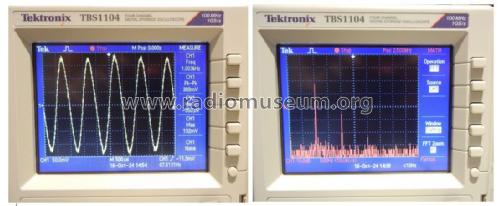- Country
- United States of America (USA)
- Manufacturer / Brand
- Freed-Eisemann Radio Corp.; New York, NY
- Year
- 1925
- Category
- Broadcast Receiver - or past WW2 Tuner
- Radiomuseum.org ID
- 40946
Click on the schematic thumbnail to request the schematic as a free document.
- Number of Tubes
- 5
- Valves / Tubes
- Main principle
- TRF (Tuned-Radio-Frequency but use of regeneration unknown); Neutrodyne
- Tuned circuits
- 3 AM circuit(s)
- Wave bands
- Broadcast only (MW).
- Power type and voltage
- Storage and/or dry batteries
- Loudspeaker
- - For headphones or amp.
- Material
- Wooden case
- from Radiomuseum.org
- Model: FE15 - Freed-Eisemann Radio Corp.;
- Shape
- Tablemodel, Box - most often with Lid (NOT slant panel).
- Dimensions (WHD)
- 19 x 9.5 x 9.5 inch / 483 x 241 x 241 mm
- Notes
- Three dials (primary tuning control knobs)
- Price in first year of sale
- 75.00 $
- External source of data
- Ernst Erb
- Source of data
- Radio Collector`s Guide 1921-1932
- Circuit diagram reference
- Rider's Perpetual, Volume 1 = 1931/1934 (for 1919-1931)
- Mentioned in
- Collector's Guide to Antique Radios 4. Edition
- Literature/Schematics (1)
- Radio Manufacturers of the 1920's, Vol. 2
- Other Models
-
Here you find 205 models, 106 with images and 128 with schematics for wireless sets etc. In French: TSF for Télégraphie sans fil.
All listed radios etc. from Freed-Eisemann Radio Corp.; New York, NY
Collections
The model FE15 is part of the collections of the following members.
Forum contributions about this model: Freed-Eisemann Radio: FE15
Threads: 1 | Posts: 1
Receiver sensitivity was measured with Rohde & Schwarz SM300 signal generator with the adaptor for long wire antenna, connected to long wire antenna input of the radio.
The sensitivity is around -55 dBm at 1 MHz with a very good (S+N)/N ratio of more than 10 dB. The signal goes in the noise level at around -70 dBm. Even signals around -60 dBm still audible, with a reasonable (S+N)/N ratio. At 550 kHz the sensitivity is also -55 dBm, at 1200 kHz around -50 dBm and at more than 1300 kHz up to 1650 kHz around -45 dBm. The reduced sensitivity at higher frequency is related to the loss of selectivity (variation of variable capacitance versus the degree of rotation of tuning knobs).
RF Bandwidth
3 dB RF bandwidth is around 5 kHz, when perfectly tuned at middle of the BC band. Measurements were performed at 1 MHz, 1 kHz modulated signal, 75 % modulation index, -50 dBm input power at the long wire input connector. Please see the measurement photos.
Tuning can be very sharp. However, in order to increase the RF bandwidth, the tuning capacitors can be misaligned a bit, especially when listening the music. Very sharp tuned is recommended for voice only.
AF Distortions
The AM modulation uses 1 kHz tone, modulation index 75%. The oscilloscope, connected at the horn output display the demodulated signal. Measurements on the oscilloscope display shows also 1 kHz with a 0.3 % combined transmitted frequency and measurement error, as seen in the left oscilloscope screen photo.
Using the FFT function of the equipment we can measure that the 2nd harmonic is almost 25 dB lower than the fundamental tone, almost a perfect sinusoidal shape.
AF Bandwidth
The 6 dB AF bandwidth for sharp tuning is 1.4 kHz (500 Hz – 1900 Hz) and the cutting frequency is 3 kHz. The carrier and two side bands of AM is only around 4 kHz, and it is almost as wide as the 3dB RF bandwidth (5 kHz). Of course this has a big impact on the audition, the voice is advantaged versus the music.
This was normal in the horn speaker era when audio signals of more than 2.5 kHz were not reproduced properly.
Attachments
Serioja Tatu, 26.Oct.24






























